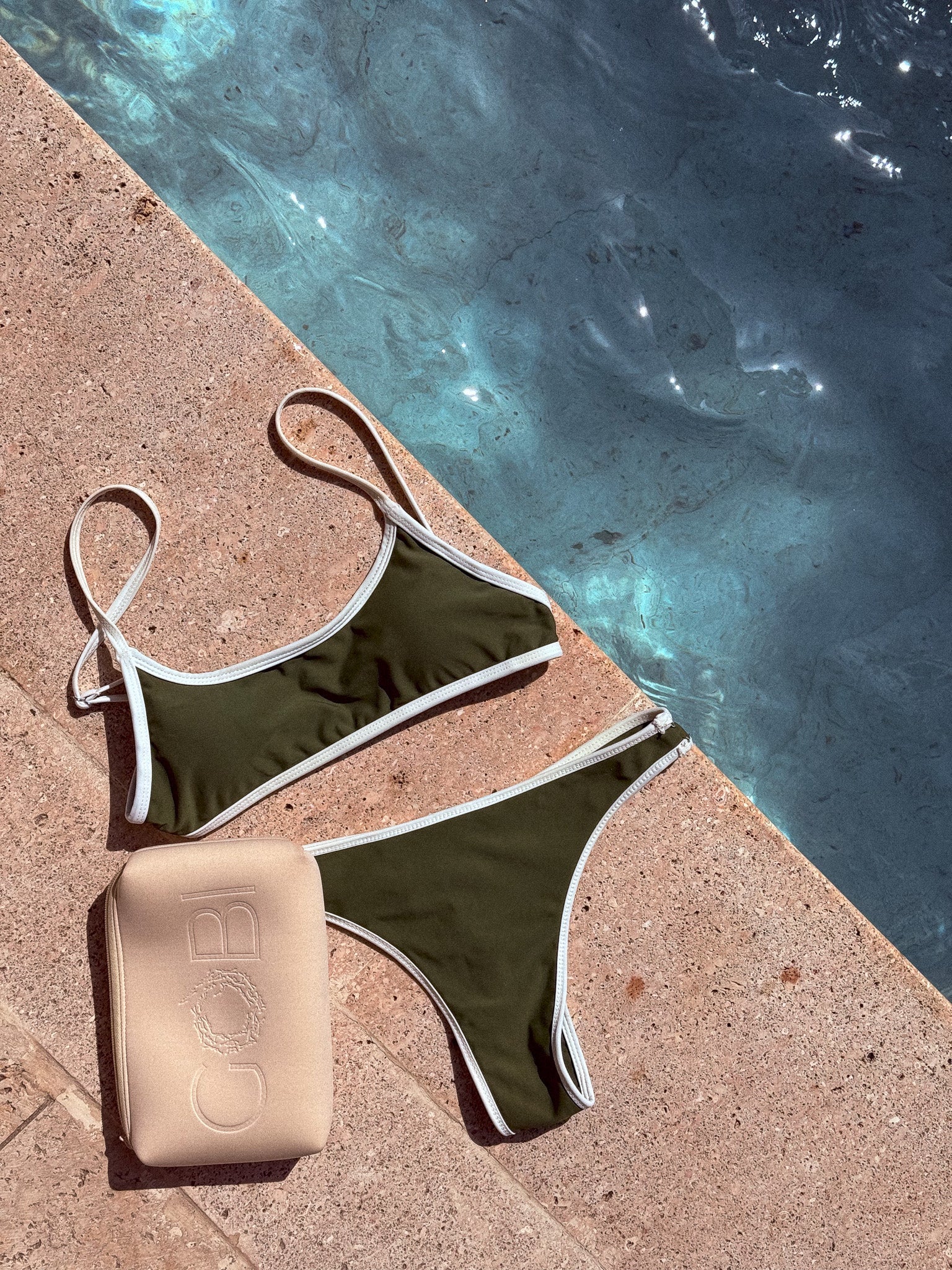We've all thrown our favorite swimsuit in the washing machine, thinking it would come out looking like new. But what a mistake! Of course, it came out a size smaller or completely deformed. Or you've used a tinted suntan oil that has turned your wonderful swimsuit white, yellow-spotted or yellowish all over.
Understandably, swimwear is a suitcase ally, and all you have to do is throw it in a ball for every trip. But if you want to keep it for more than a summer, all you need to do is follow a few simple instructions.
But how do you keep your swimwear in good condition?
Don't panic, if you follow this guide, you won't have to worry about the color or size of your swimwear. All it takes is a few simple gestures to preserve them over the long term.
- Don't leave your swimsuit in the washing machine at 60°.
A maximum of 30° will prevent them from deforming. Of course, the best thing to do is to wash your swimsuit in cold water or by hand. This will also prevent the seams, which are sometimes very fragile and not made for the washing machine, from deteriorating and letting out a bra strap.

- Your best ally is clear cold water
Taking a quick shower after the beach or pool? Take your swimsuit with you and rinse it off. Salt water from the sea or chlorine from the pool will damage the fibers and fabric of your swimsuit over the long term. What's more, you don't necessarily want your swimsuit to smell of chlorine or salt the next time you wear it. But be careful! Once again, don't rinse with hot water; rinse with cold water to avoid loosening. Hot water will relax it and may give it an unflattering shape. So rinse with cold water, and a little soap if you want it to be really clean.
- Dry in the open air, not in direct sunlight, and especially not in the tumble dryer.
Of course, drying your swimsuit in the sun is quick and tempting. Unfortunately, it also damages them. The sun makes fabrics more fragile, can cause them to stretch and, above all, lose their beautiful colors. The tumble dryer can quickly distort it.
It's best to air-dry it flat in a shady spot. This keeps its color and shape, and prevents long-term damage.

- Avoid putting your swimsuit on rough surfaces
We all want to sit by the pool, or lie on a rough rock, to admire the view/get our picture taken by our girlfriends, but beware of rough surfaces like rocks/trees/soil. They can be fatal to your swimwear and damage the fabric. Use a towel or pareo to protect your swimsuit from snags.

- Sunscreen/sun oil/tempered oil stains are virtually impossible to remove from swimsuit fabrics.
And that's something you need to know before smearing as much product on your body as possible. Our white swimsuits don't usually last more than a summer at the rate they stain. First of all, there are a few things you should avoid doing that could save the life of your precious swimsuit:
Don't apply sunscreen or tinted oil directly to your body. If you don't want to get a stain, it's best to apply the sunscreen or oil before wearing your swimsuit. Of course, you'll end up putting some back on after a dip in the water, in which case you'll need to be careful and put your cream in the palm of your hand before spreading it over your body.
Choose non-tinted products to protect you from sunburn. Very few brands try to create products that won't damage your swimwear, but let's be careful, maybe it's coming!
If your swimsuit is already stained or totally discolored from sunscreen or suntan oil, there are still a few tricks you can use to save its life:
Rinse immediately with cold water
As soon as you've applied your sunscreen and noticed a stain on your swimsuit, remember to rinse it off with plenty of cold water to prevent the stain from completely impregnating the fabric. If the stain is already in the fabric, use soap or a natural detergent. Avoid chemical products that could damage the fabric. Marseilles soap will be your ally if your jersey turns yellow when you rub the stain.
White vinegar and baking soda
If your jersey is more deeply stained, you can use our grandmothers' famous mixture of white vinegar and baking soda. The vinegar will help dissolve fatty residues, while remaining gentle enough to preserve bikini fibers. Baking soda also acts as a natural grease absorber, making it easy to remove the stain.
Ammonia for the hardest-to-remove stainsIf you've got a bikini that really needs a helping hand, put a little ammonia on a cloth and let it soak in to remove the stain. Avoid dipping the shirt directly into the ammonia unless you want to destroy it completely.
A little bleach for white bathing suits
If you have yellowish stains on your white or beige swimsuit and would like to turn it white again, you can use the bleach trick. ATTENTION: you need to be extremely careful, as you can do even more damage if the bleach is applied inappropriately.





